North Bohemia is a region in the Czech Republic and it consists of Ústí nad Labem Region and Liberec Region. This part of the country is not a popular travel destination because it had few well-known sights. But North Bohemia offers breathtaking sceneries (Bohemian Switzerland National Park, Ceske Stredohori, Bohemian Paradise), where Elbe river flatland meets mountains and creates amazing rock structures, picturesque historic towns, and some of the best castles and chateaux in the country.
North Bohemia was the heartland of Sudetenland, the German area in Czech lands (for more information, see "Understand"). Cruel and poignant memories of the 20th century are everywhere. From wealthy German villas (often abandoned now) and spas from prosperous pre-war era to Terezin concentration camp and devastated countryside because of communist-era coal mining and heavy industry.
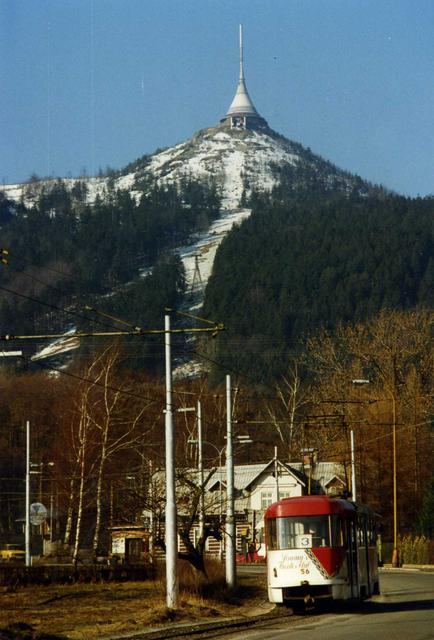
- Liberec. The biggest city (pop. 100 000) in North Bohemia and centre of Liberec Region nestled in the Jizerske Hory, at the foot of the Jested Mountain (1012 metres). In contrast with industrial Decin, Usti nad Labem, Most or Chomutov, Liberec is a lively and beautiful city with a big zoo, botanic garden, some good restaurants and more attractions.
- Ústí nad Labem. The second biggest city and capital of Usti nad Labem Region, known for heavy industry and most important Czech river port on Elbe river. Except for the small Střekov castle, Usti has not much to offer (the historic centre was destroyed during World War II and communism), however it is a good starting point for hikes in Bohemia Switzerland National Park and Central Bohemian Uplands (see "Other destinations")}
- Most. Although city's (pop. 70 000) the old medieval centre was destroyed in favour of coal mining and heavy industry, castle Hnevin and gothic church (which was moved by train to the newly constructed town almost kilometre away; according to the Guinness Book of World Records, it is heaviest building ever moved on wheels) remain as a reminder of the German past.
- Děčín. A big city (pop. 50,000) on Elbe river with baroque chateau and synagogue in Art Nouveau style.
- Chomutov. Another big city with quite nice historic centre with one the oldest gothic churches in Europe.
- Teplice. A city (pop. 50,000) known for its thermal spas.
- Litoměřice. Pretty historic town (pop. 24,000), seat of the Roman Catholic Diocese of Litoměřice. Dominant in the town is the Cathedral of St. Stephen.
- Žatec. A small (pop. 19,000) historic town located in a hops-producing area.
- Česká Lípa. A centre (pop. 40,000) of Kokořínsko landscape protected area.
Liberec. The biggest city (pop. 100 000) in North Bohemia and centre of Liberec Region nestled in the Jizerske Hory, at the foot of the Jested Mountain (1012 metres). In contrast with industrial Decin, Usti nad Labem, Most or Chomutov, Liberec is a lively and beautiful city with a big zoo, botanic garden, some good restaurants and more attractions.
Ústí nad Labem. The second biggest city and capital of Usti nad Labem Region, known for heavy industry and most important Czech river port on Elbe river. Except for the small Střekov castle, Usti has not much to offer (the historic centre was destroyed during World War II and communism), however it is a good starting point for hikes in Bohemia Switzerland National Park and Central Bohemian Uplands (see "Other destinations")}
Most. Although city's (pop. 70 000) the old medieval centre was destroyed in favour of coal mining and heavy industry, castle Hnevin and gothic church (which was moved by train to the newly constructed town almost kilometre away; according to the Guinness Book of World Records, it is heaviest building ever moved on wheels) remain as a reminder of the German past.
Děčín. A big city (pop. 50,000) on Elbe river with baroque chateau and synagogue in Art Nouveau style.
Chomutov. Another big city with quite nice historic centre with one the oldest gothic churches in Europe.
Teplice. A city (pop. 50,000) known for its thermal spas.
Litoměřice. Pretty historic town (pop. 24,000), seat of the Roman Catholic Diocese of Litoměřice. Dominant in the town is the Cathedral of St. Stephen.
Žatec. A small (pop. 19,000) historic town located in a hops-producing area.
Česká Lípa. A centre (pop. 40,000) of [[Kokořínsko]] landscape protected area.
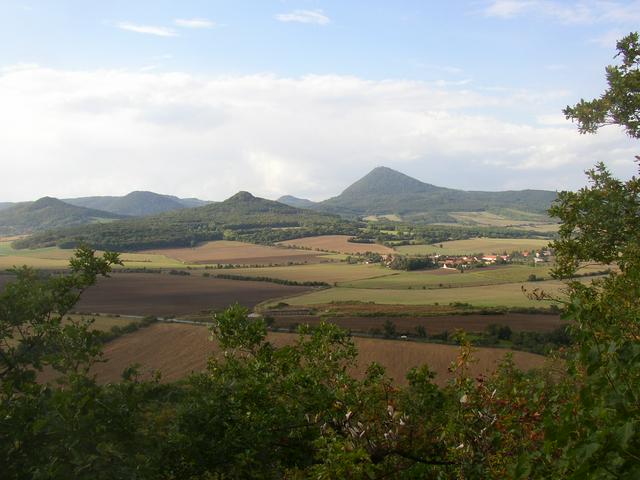
- Bohemian Switzerland National Park. Largest natural sandstone arch called "Pravcicka Brana," and other unique sandstone formation are part of the small and picturesque National Park, right on the borders with Germany.
- Bohemian Paradise. Favorite summer destination for many Czechs, Bohemian Paradise is a Protected Landscape Area with sandstone rocks and plenty of picturesque castles and chateaux, just ideal for hiking.
- Jizera Mountains.
- Elbe Sandstone Mountains.
- Central Bohemian Uplands. Different from the rest of Czech mountains. The highest peak, Milesovka, is just 800 metres high. What makes this protected landscape area (second largest protected landscape area in the Czech Rep.) beautiful is combination of Elbe river flatland and cone-shape mountains of volcanic origin (difference between highest and lowest point is 700 metres!). You can reach the area easily, because highway connecting Prague and Berlin goes right through it.
- Kokořínsko. Protected landscape area - another great landscape with amazing rocks, but Kokorisnko offers much more. For example "Czech sea" Macha's Lake (it is actually just a big pond) one of the biggest bodies of water in the Czech Republic, and Bezdez Castle from 13th century.
- Krušné hory.
- Lusatian Mountains.
Bohemian Switzerland National Park. Largest natural sandstone arch called "Pravcicka Brana," and other unique sandstone formation are part of the small and picturesque National Park, right on the borders with Germany.
Bohemian Paradise. Favorite summer destination for many Czechs, Bohemian Paradise is a Protected Landscape Area with sandstone rocks and plenty of picturesque castles and chateaux, just ideal for hiking.
Jizera Mountains.
Elbe Sandstone Mountains.
Central Bohemian Uplands. Different from the rest of Czech mountains. The highest peak, Milesovka, is just 800 metres high. What makes this protected landscape area (second largest protected landscape area in the Czech Rep.) beautiful is combination of Elbe river flatland and cone-shape mountains of volcanic origin (difference between highest and lowest point is 700 metres!). You can reach the area easily, because highway connecting Prague and Berlin goes right through it.
Kokořínsko. Protected landscape area - another great landscape with amazing rocks, but Kokorisnko offers much more. For example "Czech sea" Macha's Lake (it is actually just a big pond) one of the biggest bodies of water in the Czech Republic, and Bezdez Castle from 13th century.
Krušné hory.
Lusatian Mountains.
This area used by to be inhabited by Germans, who had been invited by Czech kings in the early Middle Ages. This area had a German majority and was called Sudety (Sudetenland). It was one of the wealthiest and most industrialized regions in Austria-Hungary and then Czechoslovakia. Before the beginning of World War II, in 1938, Sudetenland was annexed by Nazi Germany. After the war, the whole German population of 3 million people was deported to Germany, and the region was resettled by Czechs from outside the region.
Today, as a result of the expulsion of Germans and four decades of communism (during which part of the landscape was destroyed by coal mining), this region is one of the poorest parts of the Czech Republic, and it has a relatively high unemployment rate. Large German villas, these days often abandoned, are reminders of its wealthier past.
The North Bohemian landscape is stunning. On the borders with Germany and Poland are the Ore Mountains (Krusne hory), Lusatian Mountains (Luzicke hory) and Jizera Mountains (Jizerske hory). The Elbe valley, also located here, is the lowest point in the Czech Republic. The Central Bohemian Mountains (Ceske Stredohori) are of volcanic origin, and can be found with rock structures in the Bohemian Switzerland National Park.
Despite the German past, now more than 90 percent of people are Czechs. This is not Prague or Cesky Krumlov, so be prepared that people may not speak English. German and Russian are often spoken by older residents. For more information, see: information in the Czech republic guide
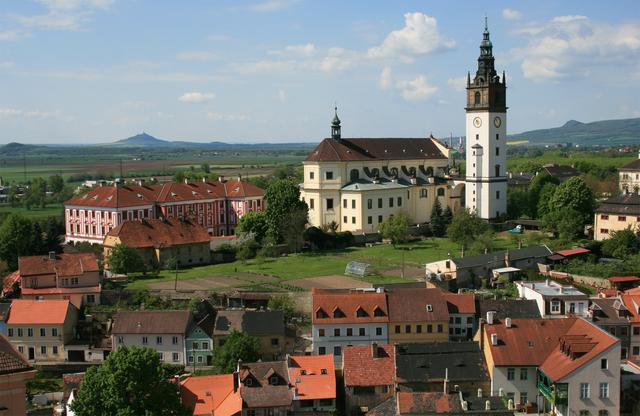
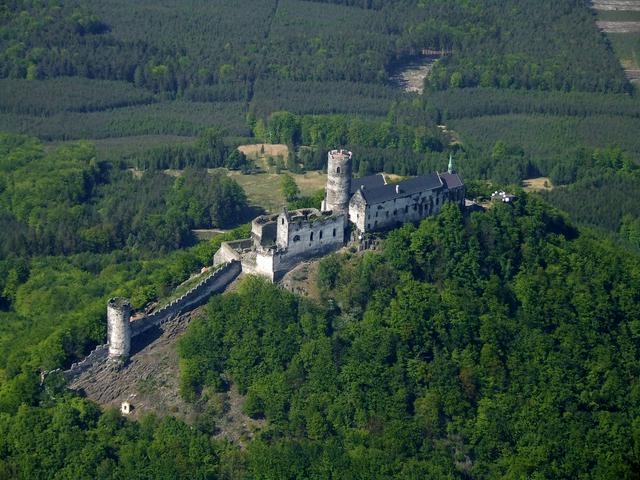
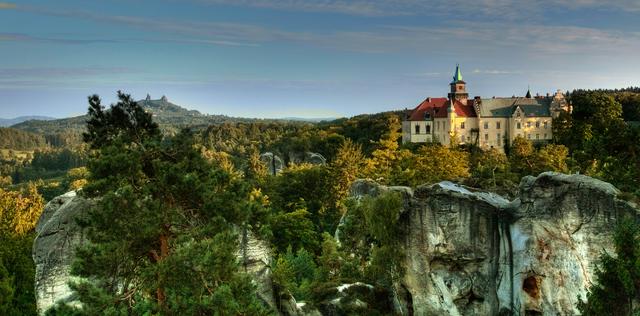 If you like landscape, go to Bohemian Paradise, České Středohoří or mountains on the borders (see other destinations). These areas are also great for people interested in architecture and history. One of the best and most famous Czech castles (Bezděz, Kost, Kokořín, Frýdlant, Trosky, Houska) and chateaux (Mnichovo Hradiště, Frýdlant, Jilemnice, Zákupy, Hrubá Skála and many, many more) can be found there. Although big North Bohemian cities can one called ugly, smaller towns are surprisingly beautiful. Jičín, Kadan, Louny, Žatec, Litoměřice, Roudnice nad Labem, Úštěk or Chomutov has well preserved gothic and baroque historic centres.
If you like landscape, go to Bohemian Paradise, České Středohoří or mountains on the borders (see other destinations). These areas are also great for people interested in architecture and history. One of the best and most famous Czech castles (Bezděz, Kost, Kokořín, Frýdlant, Trosky, Houska) and chateaux (Mnichovo Hradiště, Frýdlant, Jilemnice, Zákupy, Hrubá Skála and many, many more) can be found there. Although big North Bohemian cities can one called ugly, smaller towns are surprisingly beautiful. Jičín, Kadan, Louny, Žatec, Litoměřice, Roudnice nad Labem, Úštěk or Chomutov has well preserved gothic and baroque historic centres.
If you prefer modern architecture, you should not miss Jested Mountain with Jested Tower on the top of the mountain. This is one of the best Czech buildings built during Communism and is well known among foreign architects due its hyperboloid shape, which naturally extends the silhouette of the hill. Moreover, there are great views of Liberec city and whole Bohemia as well.
- Terezin. A small town and originally military fortress from Habsburg era, best known for Terezin concentration camp.
- Úštěk. A small town locted few kilometres from Litomerice with well preserved gothic houses.
- Panská Skála. A curious rock structure, which looks like an organ, is definitely worth a visit. There is nothing like that in the Czech Republic. It is located in the little town Kamenický Šenov, 17 kilometres from Česká Lípa.
- Říp Mountain. A 450 metre high solitary hill rising up from the central Bohemian flatland. It is place, according to legend, where the first Czech people settled. Old rotunda of Saint George can be found on the top.
Panská Skála. A curious rock structure, which looks like an organ, is definitely worth a visit. There is nothing like that in the Czech Republic. It is located in the little town Kamenický Šenov, 17 kilometres from Česká Lípa.
Říp Mountain. A 450 metre high solitary hill rising up from the central Bohemian flatland. It is place, according to legend, where the first Czech people settled. Old rotunda of Saint George can be found on the top.
Terezin. A small town and originally military fortress from Habsburg era, best known for Terezin concentration camp.
Úštěk. A small town locted few kilometres from Litomerice with well preserved gothic houses.
Network of walking trails is dense and trails are well marked. Moreover, the landscape is beautiful, with sandstone rocks and many castles and chateaux (look at the See section above). Bohemian Paradise is most popular destination and there is plenty of places, where you can rest, eat, sleep or buy a souvenir. However, in summer it could be a bit crowded.
If you are fan of unplanned hiking, Central Bohemian Uplands is the place you will love. There are dozens of small hills that are near the road, so you can just stop and go for a short hike with beautiful views. Since most of the hills don’t have many trees on them, no hiking trails are needed and you can just go straight up. As a bonus, you will most probably be the only one on the hill you choose.
Biking is also popular due to flatland located here. However, cycling some mountains in České Středohoří or Jizera Mouinains can be more challening.
You can swim and sunbathe on shores of Machovo jezero (Macha's Lake) in Kokořínsko landscape protected area.
Why go by foot, if you can borrow canoe, kayak or inflatable boat and follow many Czech tourists on Ohře and Jizera rivers.
- Teplice
- Bílina
Due to several mountains on borders with Germany and Poland, there are few small ski resorts.
- Krupka, near Usti nad Labem and Teplice
- Loucna, near Chomutov
- Jested in Liberec
- Bedrichov, Bila and Severak around Liberec.
- Kliny, near Litvínov
- Mezihoří, near Chomutov
In North Bohemia are several local breweries. The area around Žatec is well known for production of hops. In Žatec there is a museum about hops and brewing. In the towns Žatec and Louny you can find many local town breweries that are usually connected to a restaurant.
Local breweries
- Studánka in Liberec
- Frýdlant chateau brewery
- Cvikov
- Restaurant with brewery in Děčín
- Křinice brewery in Krásná Lípa
- Klášter brewery in Mnichovo Hradiště
Among the most northerly in Europe, two only Bohemian wine subregions (the bigger wine area is in South Moravia) are located in North Bohemia, thanks to Elbe's rivers flatland. Wineyards are arond towns Mělník (officialy part of Central Bohemia Region) and Litoměřice
North Bohemia has an above average criminality than rest of the Czech Republic. In some bigger cities in Usti nad Labem Region, there are ghettos (for example Chanov quarter in Most) with population of poor people, usualy Romani origin. Avoid these places if you want to stay safe. Of course, if you are interested in exploring the poorest parts of countries, take the risk and go there.
Your next destination can be Prague and Central Bohemia, Pilsen and spas in West Bohemia, Krkonose Mountains and some beautiful towns in East Bohemia or Germany (Sachsen).
